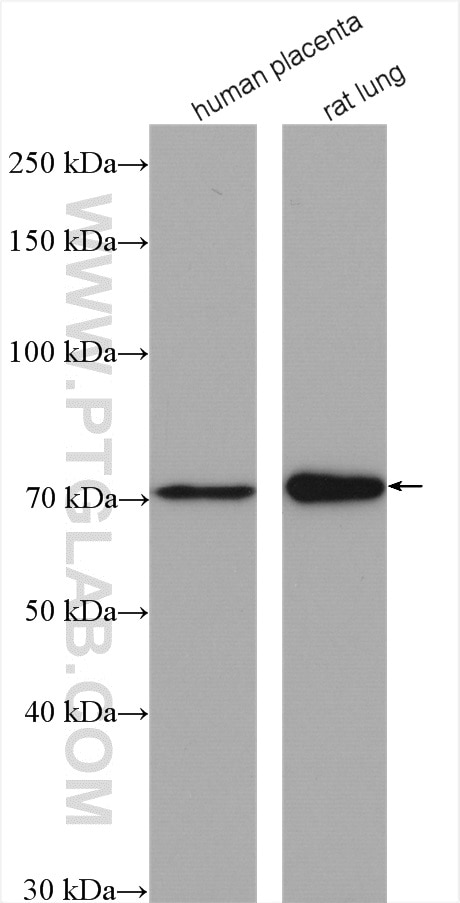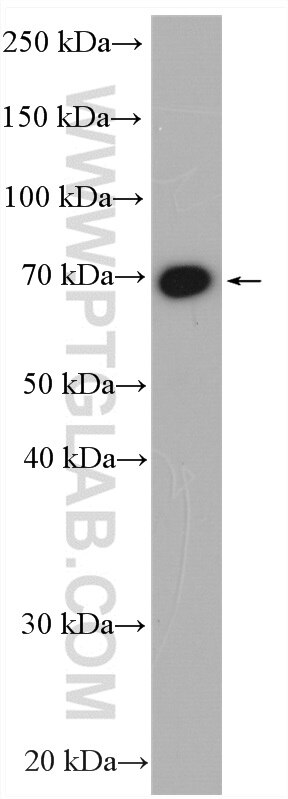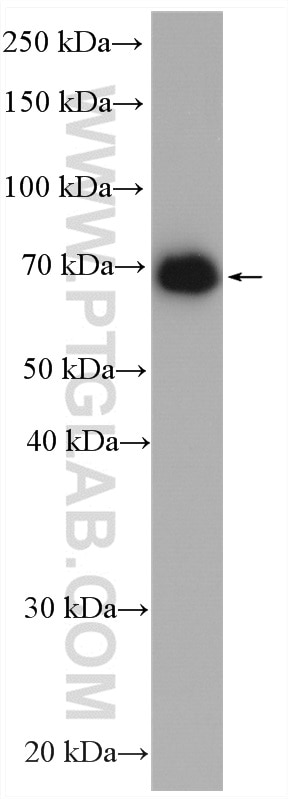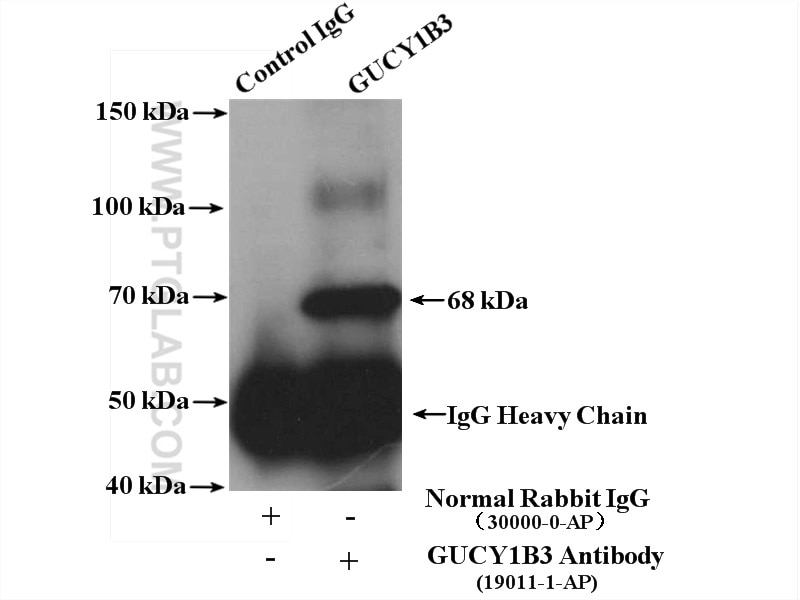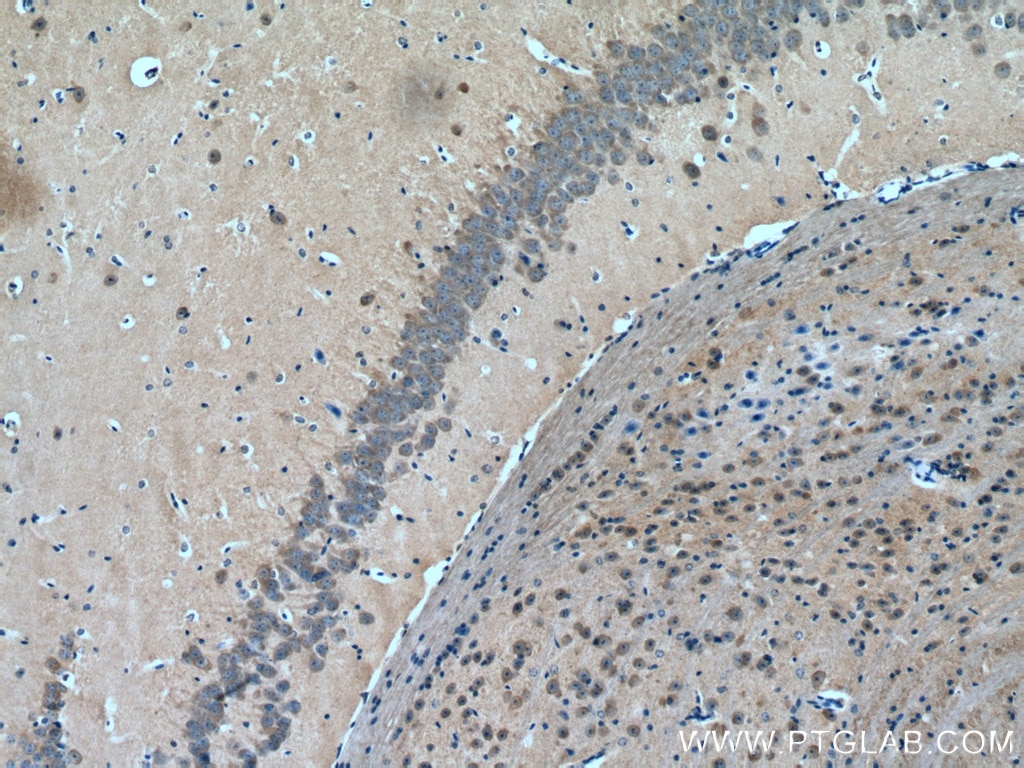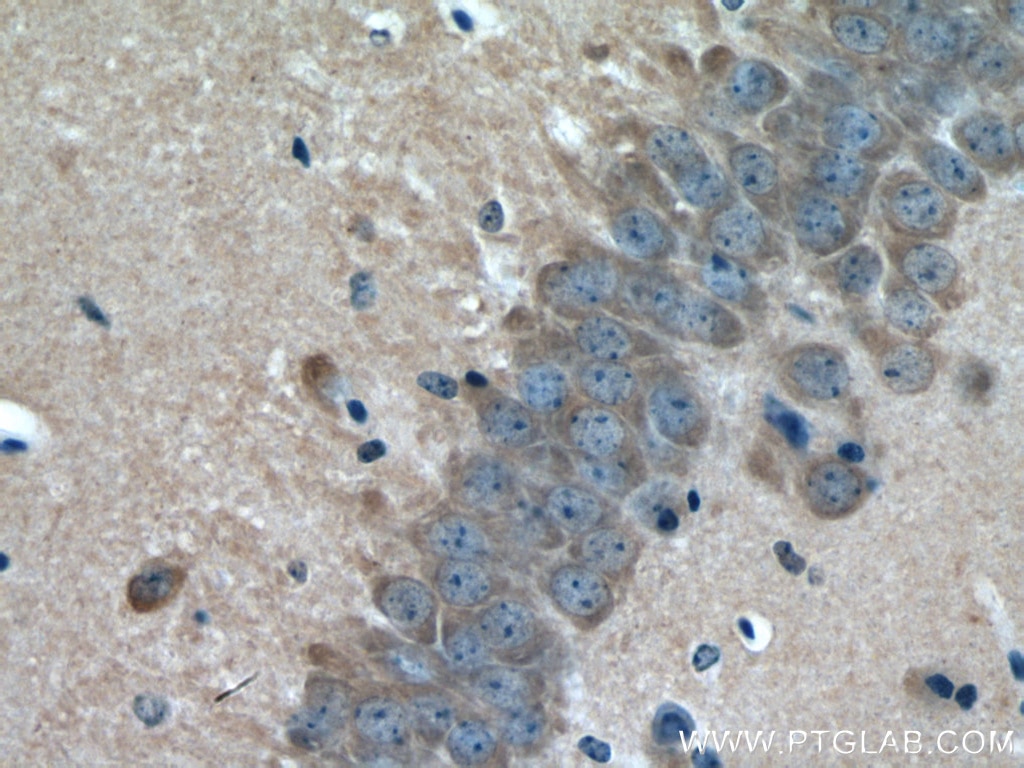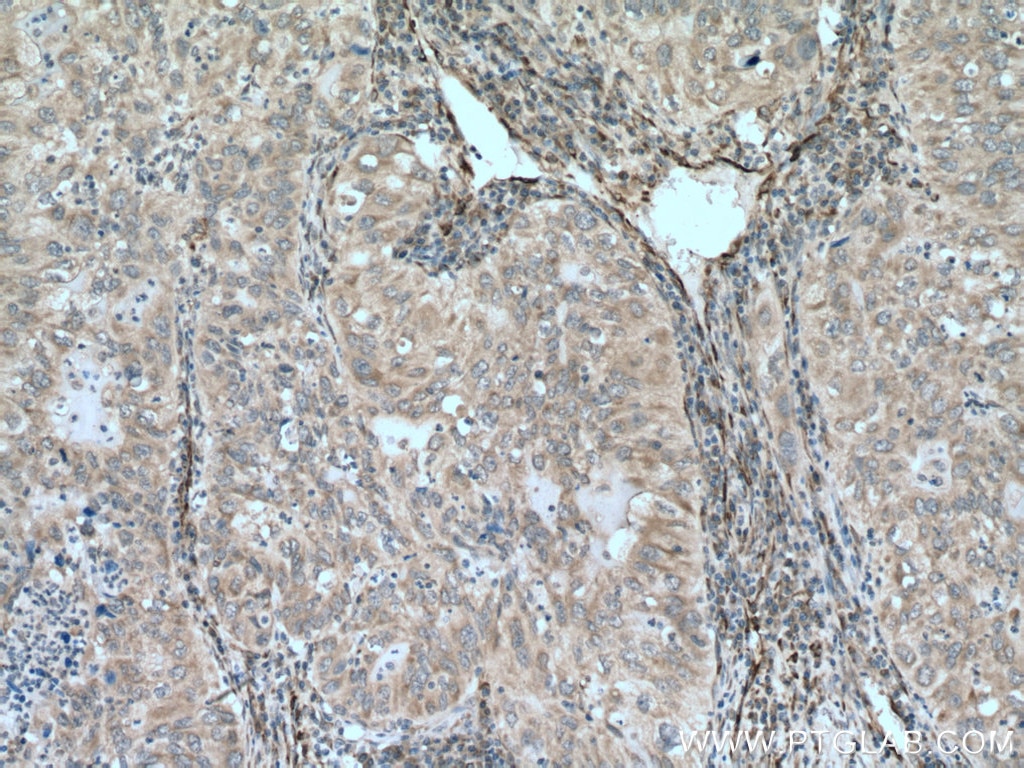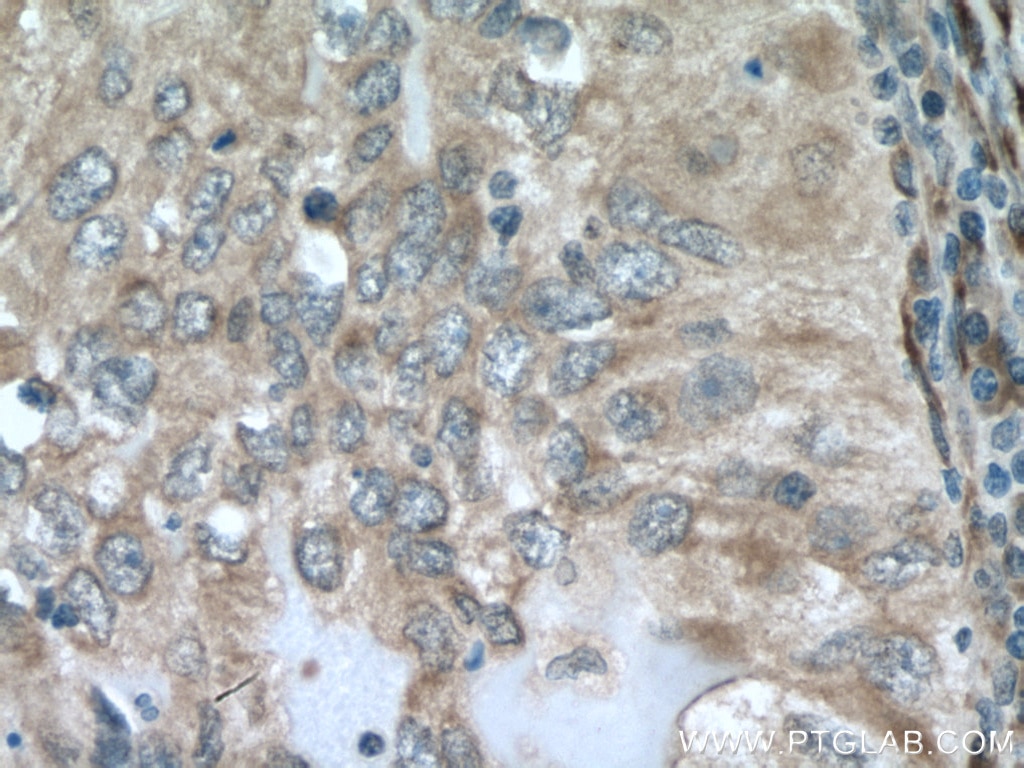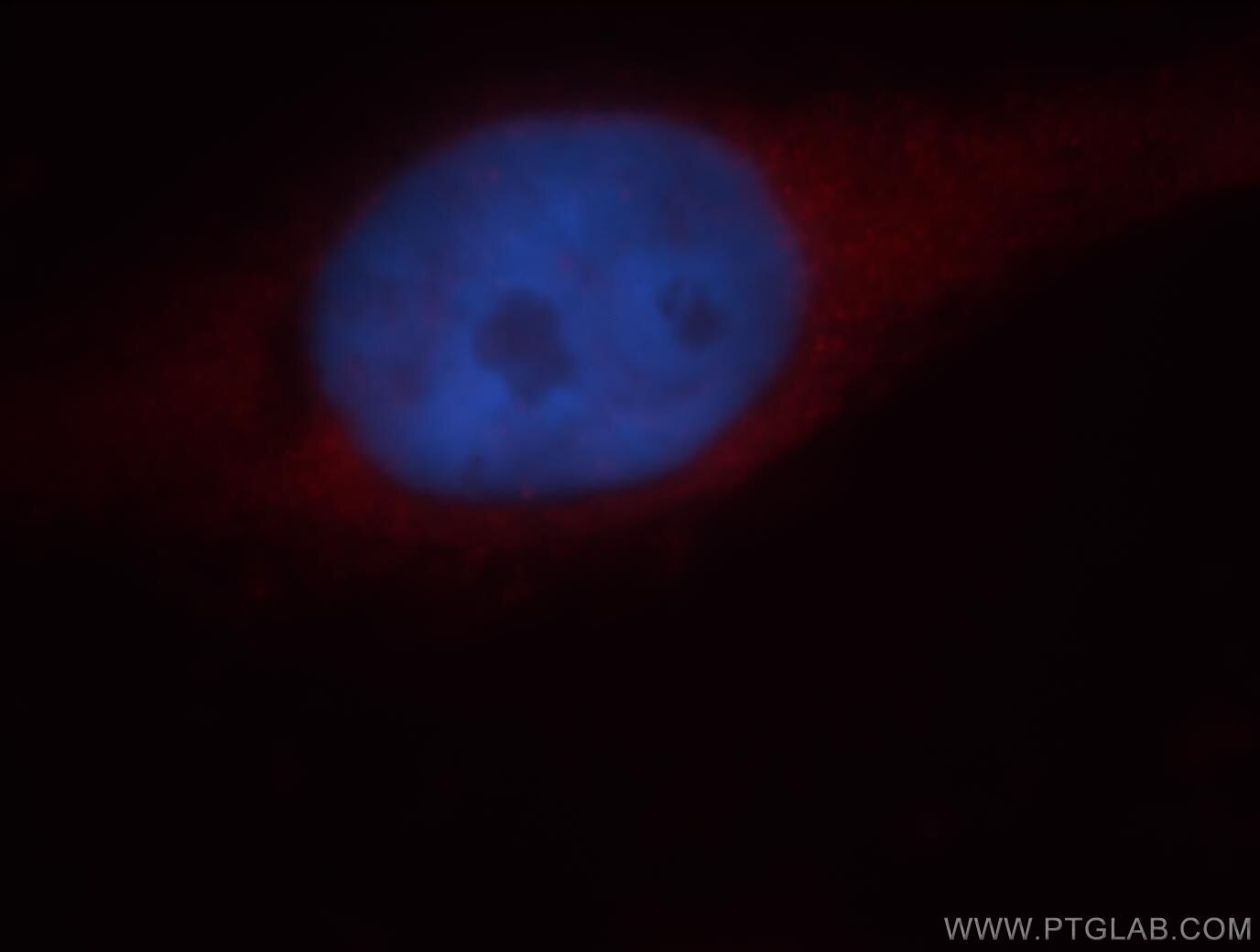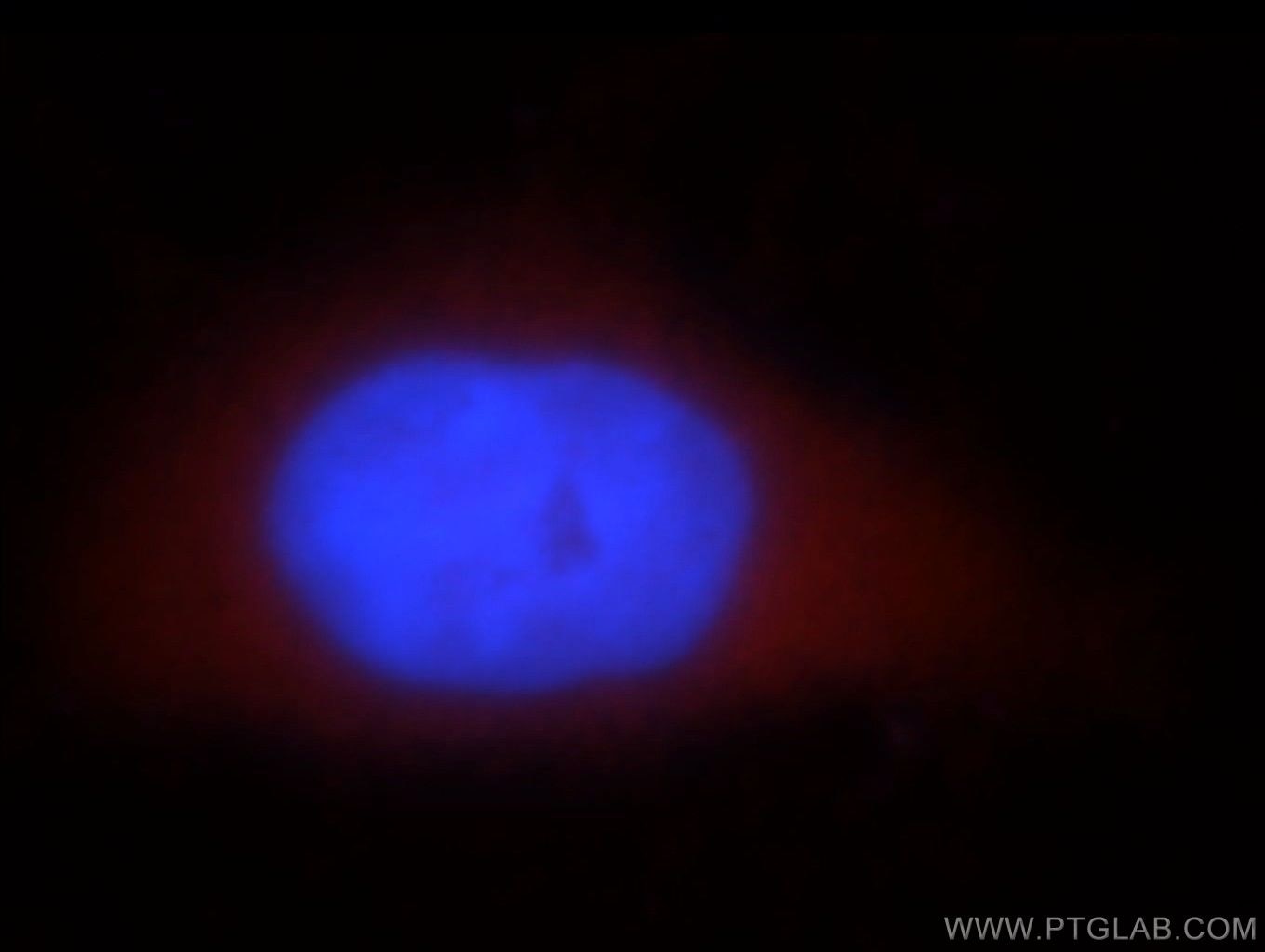- Featured Product
- KD/KO Validated
GUCY1B3 Polyklonaler Antikörper
GUCY1B3 Polyklonal Antikörper für IF, IHC, IP, WB,ELISA
Wirt / Isotyp
Kaninchen / IgG
Getestete Reaktivität
human, Maus, Ratte
Anwendung
WB, IP, IHC, IF, ELISA
Konjugation
Unkonjugiert
Kat-Nr. : 19011-1-AP
Synonyme
Galerie der Validierungsdaten
Geprüfte Anwendungen
| Erfolgreiche Detektion in WB | humanes Plazenta-Gewebe, Mauslungengewebe, Rattenlungengewebe |
| Erfolgreiche IP | humanes Plazenta-Gewebe |
| Erfolgreiche Detektion in IHC | Maushirngewebe, humanes Lungenkarzinomgewebe Hinweis: Antigendemaskierung mit TE-Puffer pH 9,0 empfohlen. (*) Wahlweise kann die Antigendemaskierung auch mit Citratpuffer pH 6,0 erfolgen. |
| Erfolgreiche Detektion in IF | HeLa-Zellen, MCF-7-Zellen |
Empfohlene Verdünnung
| Anwendung | Verdünnung |
|---|---|
| Western Blot (WB) | WB : 1:1000-1:4000 |
| Immunpräzipitation (IP) | IP : 0.5-4.0 ug for 1.0-3.0 mg of total protein lysate |
| Immunhistochemie (IHC) | IHC : 1:50-1:500 |
| Immunfluoreszenz (IF) | IF : 1:10-1:100 |
| It is recommended that this reagent should be titrated in each testing system to obtain optimal results. | |
| Sample-dependent, check data in validation data gallery | |
Veröffentlichte Anwendungen
| KD/KO | See 1 publications below |
| WB | See 6 publications below |
| IHC | See 2 publications below |
Produktinformation
19011-1-AP bindet in WB, IP, IHC, IF, ELISA GUCY1B3 und zeigt Reaktivität mit human, Maus, Ratten
| Getestete Reaktivität | human, Maus, Ratte |
| In Publikationen genannte Reaktivität | human, Maus, Ratte |
| Wirt / Isotyp | Kaninchen / IgG |
| Klonalität | Polyklonal |
| Typ | Antikörper |
| Immunogen | GUCY1B3 fusion protein Ag5196 |
| Vollständiger Name | guanylate cyclase 1, soluble, beta 3 |
| Berechnetes Molekulargewicht | 71 kDa |
| Beobachtetes Molekulargewicht | 67-71 kDa |
| GenBank-Zugangsnummer | BC047620 |
| Gene symbol | GUCY1B3 |
| Gene ID (NCBI) | 2983 |
| Konjugation | Unkonjugiert |
| Form | Liquid |
| Reinigungsmethode | Antigen-Affinitätsreinigung |
| Lagerungspuffer | PBS mit 0.02% Natriumazid und 50% Glycerin pH 7.3. |
| Lagerungsbedingungen | Bei -20°C lagern. Nach dem Versand ein Jahr lang stabil Aliquotieren ist bei -20oC Lagerung nicht notwendig. 20ul Größen enthalten 0,1% BSA. |
Protokolle
| Produktspezifische Protokolle | |
|---|---|
| WB protocol for GUCY1B3 antibody 19011-1-AP | Protokoll herunterladen |
| IHC protocol for GUCY1B3 antibody 19011-1-AP | Protokoll herunterladen |
| IF protocol for GUCY1B3 antibody 19011-1-AP | Protokoll herunterladen |
| IP protocol for GUCY1B3 antibody 19011-1-AP | Protokoll herunterladen |
| Standard-Protokolle | |
|---|---|
| Klicken Sie hier, um unsere Standardprotokolle anzuzeigen |
Publikationen
| Species | Application | Title |
|---|---|---|
Nat Commun Aortic disease in Marfan syndrome is caused by overactivation of sGC-PRKG signaling by NO. | ||
Clin Sci (Lond) Empagliflozin prevents cardiomyopathy via sGC-cGMP-PKG pathway in type 2 diabetes mice.
| ||
Sci Rep Hypertension reduces soluble guanylyl cyclase expression in the mouse aorta via the Notch signaling pathway. | ||
Cell Tissue Res Cavin-3 (PRKCDBP) deficiency reduces the density of caveolae in smooth muscle. | ||
World Neurosurg Upregulation of Connexin 40 Mediated by Nitric Oxide Attenuates Cerebral Vasospasm After Subarachnoid Hemorrhage via the Nitric Oxide-Cyclic Guanosine Monophosphate-Protein Kinase G Pathway. | ||
Front Endocrinol (Lausanne) Specific dilation pattern in placental circulation and the NO/sGC role in preeclampsia placental vessels |
